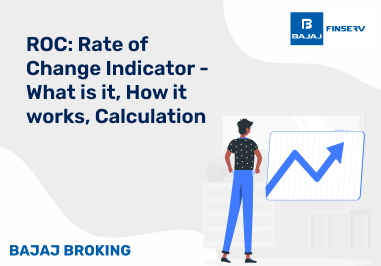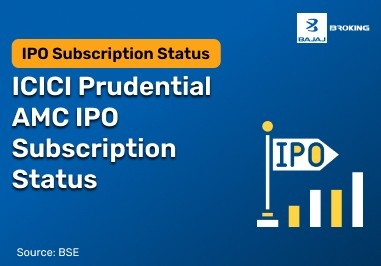Algorithmic trading refers to the use of computer programs to execute trades automatically. These programs follow fixed rules written in code. Many people now use Python to build such programs. Python is a simple language to learn and comes with numerous tools that make coding easier. With Python, a person can create a trading idea, test it using past data, and then use it in real-time markets. Algorithmic Trading with Python helps save time and reduce manual work. This blog will explain why Python is used for algo trading, its benefits, how to get started, and what topics to explore after learning the basics.
Why Choose Python for Algo Trading?
Python is an appropriate choice for algorithmic trading because it is easy to read and write. Even people who are not professional programmers can understand it. Python offers a range of useful tools for mathematics, data analysis, and charting. You can use these tools to work with price data and test trading ideas. It also works well with trading platforms using APIs. This means you can send orders to the market through your code. Since Python is free to use, it is also a cost-effective option. People choose Python for algorithmic trading because it enables the faster and more efficient development of trading systems, with fewer errors compared to more complex programming languages.
Benefits of Using Python in Algorithmic Trading
There are several reasons why people prefer Python for algorithmic trading. Some of the main advantages of algorithmic trading are as follows:
- Easy to Read Code - Python code is simple and clean. This helps in writing and updating strategies.
- Wide Range of Libraries - Python has many built-in tools for data analysis, math, and making charts.
- Ideal API Support - Python can connect with brokers using APIs to send and manage trades.
- Helpful Community - Many users share solutions and code, which makes it easy to learn.
- Free to Use - Python is open-source. You don’t need to pay to download or use it.
How to Start Algorithmic Trading with Python?
To start with Algorithmic Trading with Python, you need to learn some coding, understand trading basics, and follow a step-by-step process to build your own system.
Step 1: Setting Up Your Coding Environment
First, install Python on your computer. You can use Anaconda, which includes a range of useful tools and libraries. For writing code, start with Jupyter Notebook or Visual Studio Code. Use pip or conda to install essential libraries, such as Pandas, NumPy, and Matplotlib. These help with handling numbers and data. You can also install yfinance to get stock market data. It’s better to create a virtual environment to manage your projects separately. Setting this up is the first step to working in Algorithmic Trading using Python, and it prepares you to write and test trading strategies.
Step 2: Understand Basic Trading Concepts
Before writing your trading code, learn how markets work. You should be familiar with terms such as market order, limit order, stop-loss, and liquidity. It’s also important to understand trading instruments such as shares, futures, and options. Learn how stock exchanges handle trades and how prices move. This knowledge helps in building better and safer strategies. If your code doesn’t match how real trading works, it might give wrong results. Understanding these fundamental concepts is a crucial step in developing reliable systems for algorithmic trading using Python. It also helps avoid mistakes in real-time situations.
Step 3: Start Coding Your First Strategy
Begin with a simple idea. For example, a moving average crossover strategy. In this scenario, the program will place a buy order if the short-term average price exceeds the long-term average. You can write this using Pandas and NumPy. These libraries help manage large datasets and perform calculations. Try using past price data to see how the strategy performs. Algorithmic Trading with Python allows you to test many strategies quickly. Once you understand how this works, you can try more complex strategies. Starting small helps you build confidence before using real-time data.
Step 4: Backtest Your Strategy
Backtesting refers to testing your strategy using historical price data. This helps you understand how your idea might work in real markets. Use tools like Backtrader to test and view the results. Focus on checking the gains, drawdowns, and number of winning trades. Also, include things like brokerage charges in your test to get realistic results. A backtest shows you the strengths and weaknesses of your trading logic. Before using your strategy live, always thoroughly backtest it. It’s a safe way to reduce mistakes in algorithmic trading and helps improve your strategy before real trading begins.
Step 5: Implementing the Strategy with API
Once your strategy is ready and tested, you can connect it with a trading account using an API. APIs enable your code to send and manage orders in real-time. You must obtain access from your broker and follow their setup instructions. It is important to handle errors in your code so the system doesn’t crash during trading. Begin with paper trading, which lets you trade without using real money. This checks if your system works properly. Using APIs is a crucial aspect of Algorithmic Trading with Python, as it enables full automation from code to the market.
Step 6: Risk Management
In algorithmic trading, managing risk is very important. Add stop-loss and take-profit rules in your code. This helps limit losses and lock gains. Don’t put all your money in one trade. Use a small part of your capital for each position. Try to spread trades across different assets. Python can handle this by setting rules in your code. Always check how your system is performing and update the rules if needed. Effective risk management helps protect your money and makes your trading strategy more stable over time.
In-Depth Concepts in Python-Based Algo Trading
Once you’re comfortable with the basics, Algorithmic Trading with Python allows you to explore deeper topics. These advanced tools can help improve your strategies.
- Statistical Arbitrage - This strategy utilises mathematical techniques to identify price gaps between two related assets.
- Machine Learning Models - You can utilise models such as Decision Trees or Support Vector Machines to predict market movements.
- Sentiment Analysis - With tools like spaCy and NLTK, Python can analyse news or tweets to determine if the market mood is positive or negative.
- Order Book Analysis - You can study buy/sell orders to guess where the market might go.
- Forecasting Prices - Python can help predict future prices using models such as ARIMA or LSTM, based on historical data.
- Portfolio Management - Use Python tools to manage your money across many assets by checking gains and risk levels.
- Event-Driven Programming - Some frameworks enable your strategy to respond when new data becomes available, such as a price change or a news alert.
- Visual Tools - Utilise libraries such as Seaborn and Plotly to create charts and graphs. This helps understand trends and patterns easily.
These concepts can help build better and smarter systems for Algorithmic Trading using Python. Learning them one by one makes your strategies more detailed and data-driven.
Popular Learning Materials for Python Algorithmic Trading
To grow your knowledge in Algorithmic Trading with Python, here are some learning resources you can explore.
Books
Online Courses
Python Library Documentation
Read the official guides for NumPy, Pandas, and Backtrader to learn how to use them.
Practice Code on GitHub
You can find many open-source codes online. Try running and editing them to see how things work.
These tools and materials are useful for learning how to create and test real-world strategies in algorithmic trading using Python.
Final Thoughts
Algorithmic Trading with Python helps turn trading ideas into working systems. With Python, you can write code, test it, and automate your trades. It enables users to follow established rules and avoid making emotional decisions. Python is simple, free, and flexible, which makes it easier to learn and use. However, users must follow safety steps, such as backtesting and risk control. As markets change often, it is also important to update your strategy regularly. With the right steps, Python can become a powerful tool for building reliable trading systems over time.














